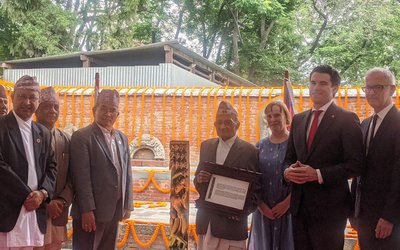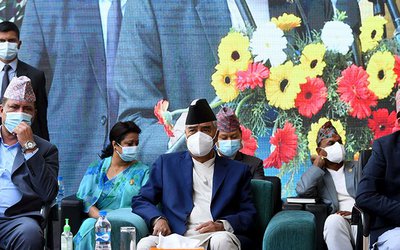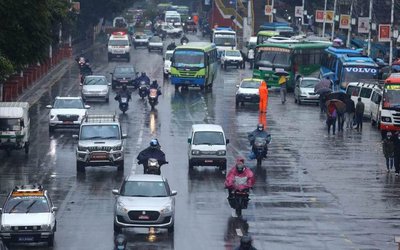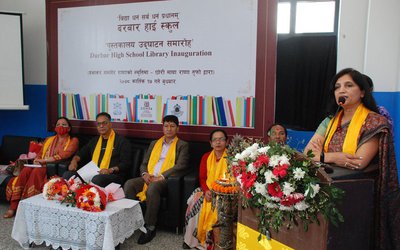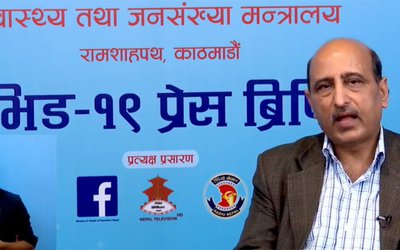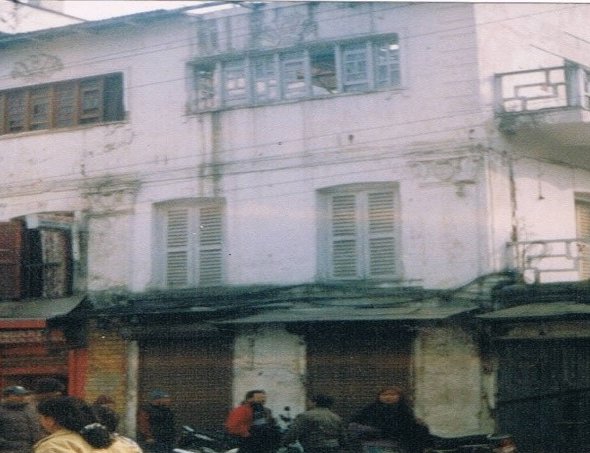
Nepal Bharat Library (NBL), known by the name of Nepal-Bharat Sanskritik Kendra (NBSK) till 2005, is usually called the Indian Library (IL). It had been one of the most prominent libraries in Nepal for some decades in the past. It was a very popular library in the Kathmandu Valley on account of the following reasons: i) It was considered as the first foreign library in Nepal; ii) It was among a few libraries for the public having an open access system; iii) Over 75% of resources were in the Devanagari script; iv) It was a reliable platform for the Indian public diplomacy in the sense that various programmes, literary, cultural and art exhibitions by writers/artists from India and Nepal, were used to be organized; v) It was a meeting point for the like-minded personalities/individuals; vi) Institutional name was aptly coined that spiritually connected people from both countries; and so on.
After India set up diplomatic relations with Nepal on 13th June 1947, the Ministry of External Affairs (MEA), through its Embassy of India (EOI), founded the NBSK at Basantapur in 1951 to enhance and strengthen cultural relations and information exchange between India and Nepal.
Though there was a provision for establishing branches of foreign libraries outside the capital, it could not last long after they were prohibited by the then His Majesty's Government of Nepal on 14th July 1972. As a result, all the NBSK branches run by the diplomatic missions were shut down consecutively. But such a scenario drastically changed after the restoration of democracy then and the Federal Democratic Republic of Nepal today.
On 26th March 1997, Ashok Sinha, DCM, had expressed the view that computerization, including networking required urgent action for standardizing library services. He stressed the need to set a time-frame for completion of this job. He felt that infrastructural requirements should be accorded priority because the NBSK was one of the few points in the mission where important process of information-transfer and user-interaction would take place. Monika Kapil Mohta, First Secretary (Press & Information) invited attention toward the fact that the NBSK was the show-window of the mission. The then First Secretary (Commerce & Projects) suggested that a PTI terminal might also be installed at the NBSK for dissemination of press information. The high level officers approved recommending the proposal to the MEA for modernizing their library system, making it an Indian Embassy showpiece in Nepal.
The ex-Ambassador Prof. Bimal Prasad had shown great interest in opening an Audio Visual Room for screening of informative documentaries and multi-media activities. In 1998, DCM had instructed that a six month schedule must be prepared in advance to organize documentary/film shows at Pension Paying Offices (PPOs), District Soldiers Boards (DSBs) and branches of Nepal-Bharat Maitri Samaj (NBMS) and Nepal-Bharat Maitri Sangh (NBMS). It was believed that such shows had made a great impact on the audience and therefore it was decided to restart the same on priority basis and continue in future too.
It is said that the NBSK was about to be shifted to Bharatiya Gorkha Sainik Niwas (BGSN), Thamel, a couple of decades ago but was prevented from happening so and remained at the same location, keeping in view to respect the sentiments of users/visitors/well-wishers. All its credit goes to Harish Chandra Shukla (who was Cultural Attaché, later on Second Secretary (PIC)) during his Nepal visit when he came to know about the matter of moving the NBSK to BGSN, according to a reliable source.
There was a time when the NBSK used to present print materials and non-print materials to various governmental/semi-governmental institutions and to some extent non-governmental institutions in Nepal after the screening of applications. It may be recalled that the eligible recipients were particularly those institutions that were located at remote/rural areas and really in need of resources.
The NBSK was known as a public library as it was open for people, including members and non-members, from all walks of life, regardless of their age, gender, caste, religion, nationality, education, profession, social status, and so on. Though it seems even today as a public library, it is by type a missionary library run by the Indian diplomatic mission.
If there was any big and extensively used centre of study and research in Kathmandu for many decades, it was undoubtedly the NBSK. It was the most widely used library not only in Kathmandu but in whole Nepal. People ranging from just literate to scholars, general readers to researchers, children to aged citizens, school students to college/university students, teachers to professors, diplomats to politicians, and so on used to visit the NBSK for exploiting the resources that resulted to a platform for building up friendships too!
When the NBSK was shifted from Basantapur to its present location on the ground floor of the then Royal Nepal Airlines Corporation (RNAC) building at New Road in 1970, it had an area of approximately 4,500 sq. ft. for nearly ten years until the late 1980s but was later limited to the area of 3,474 sq. ft. by which its area of 1,026 sq. ft. is lesser today than earlier. In the meantime (around 1970/71), its branch of learning centre at Dilli Bazaar was on the verge of shutting down due to domestic problem between brothers/owners of the building and unavailability of any other suitable building nearby.
In the early 1980s, there were approximately 46,000 books, about 3,000 members, an average of 1,150 users/visitors daily and 14-15 staff members including two India-based Senior Library and Information Assistants (SLIAs)- one for English Section and another for Hindi Section- three years for each among whom one would be Chief Librarian on the ground of seniority.
It is worth mentioning that the then most renowned institution like the NBSK officially remained unfulfilled with the post of Assistant Librarian for quite a long time! However, the staff member designated as UDC was supposed to work in the capacity of Assistant Librarian as he/she was the one who was just subordinate to him/her and had to look after the library in his/her absence!
The NBSK had 6 days a week open for the users/visitors by providing overtime facilities to staff members for sometime in the past. The timing was from 12 to 07 p.m. for the public and 11 a.m. to 07 p.m. for the staff members. There was also a rumor about getting the NBSK open from 07 a.m. to 07 p.m. with two shifts (morning to noon and noon to evening) for the staff members without any break time for them so that the users/visitors could benefit from the resources and activities as there were so many such users/visitors who could manage visiting the NBSK either early morning or late evening.
To recapitulate briefly, if fruitful planning for running the NBSK- divided into two shifts to utilize the library services at the optimum level from the same location at New Road- had been implemented, the objective behind the establishment of the NBSK would have been remarkably justified. Moreover, the standard of NBL would be uplifted had it the post of Assistant Librarian academically qualified. Nevertheless, it's not too late for the NBL to achieve a grand success regardless of Assistant Librarian and location elsewhere!
Dil Bahadur Basnet
BASNET is an intern
- Indian Library: Strengthening Indo-Nepal Relations
- Apr 07, 2018

